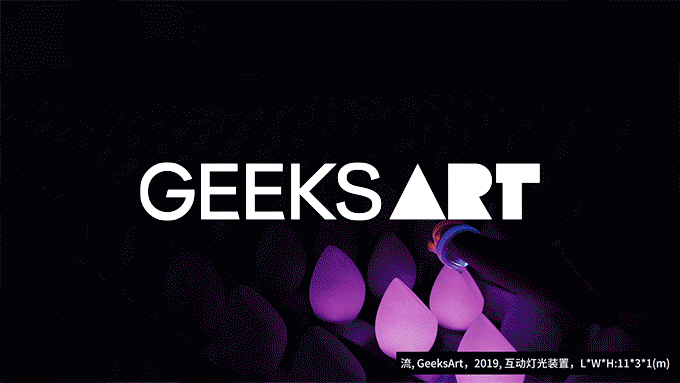一.当代祠堂
临:到,来;光临,莅临,亲临;
里:附近的地方;
叙:叙事,叙亲,叙旧;
Chat by:连接,分享,融合。
Lin: to arrive, to visit, to show up in person, to feel welcome;
Li: to be a part of the neighborhood;
Xu: to tell narratives, stories, and memories about people;
CHATBY: to connect, share, and integrate.
聚合,是临里叙CHATBY的“行为”;
以行动主义的姿态创造“空间理想”的第一步:让临街的“墙体”推进3米,“退让”出与外界相通的走廊空间,冰冷的现代城市规则和秩序得以弱化,连结得以发芽,生根。
Gathering is CHATBY’s “activity”—
The first step was to create a “spatial ideal” with a gesture of activism: We pushed the “wall” facing the street inward by 3 meters, giving way to a corridor that connects with the outside world. We weakened the rules and order of the modern concrete city, allowing connections to take root and sprout.
聚合,是临里叙CHATBY的“内容”;
仪式私宴、午晚轻食、夜场酒廊
人文聚会、艺术展览、学术分享
临街杂货、行为快闪、附近市集
Gathering is CHATBY’s “content”—
Private ceremonies, light dishes, late-night drinks
Cultural gatherings, art exhibitions, academic talks
Street groceries, pop-ups, neighborhood market
……
▲入口
不同的个体内容拥有各自的空间尺度及外延地域,当人的活动轨迹出现在这张有机的网络,使得这个多元商业空间让人们从消费者的身份中找到一种兴趣的还原:学者、艺术家、社会工作者、农人、商人……及其关系的回归:如朋友、家人、同乡、同学、同事……。
Different people have different spatial scales and outlying territories. When their trajectory enters this organic, multifaceted network of commercial events, their identities are restored to their personal interests rather than consumption habits: They may be a scholar, an artists, a social worker, a farmer, a businessman……Meanwhile, their personal relationships are restored as a friend, a family member, a migrant from the same hometown, a classmate, a coworker…….
里呼外应。
内部空间的有机路径通往两道大门入口,将空间外部划分为左中右三个平面构成,这一与街道无缝接触的超长廊式门面,呈现出一个对称的大场景,由此,内里的复杂形态与外露的庄重感受的结合最终达成了这个项目的核心——一种作为“当代祠堂”的新型空间商业形态,回应这个时代城市里令人动情的审美与共鸣。
Connecting the “in” and the “out”—
The organic paths of the interior space lead to two main entrances, dividing the exterior into three sections: left, right, and middle. This extra-long corridor facade, which is in seamless contact with the street, presents a grand symmetrical scene. The complexity of the interior space and the solemnity of the exterior altogether achieves the goal of this project—a “contemporary ancestral hall” in the form of a commercial space resonating with the emotional aesthetics of the current era.
▲门面全景
二.介乎之间In-Between
长廊区域是一个介乎之“间”。介乎于里与外,介乎于留下与路过,介乎于瞬间与周期。时间和空间在此处相互作用,成为彼此的尺度。而生活的确定性则体现在散点的设计元素中:浓厚的黑色窗(画)框、传统木雕、长形竹椅……它们在不同程度上塑造行为,在时间的光影下,完成了一个非单一理解和使用的自主空间设计。
The promenade is an “in-between” space: between inside and outside, staying and passing, transient and permanent. Time and space interact with each other and become the measure of each other. The certainty of life is reflected in the scattered design elements: thick black window frames, traditional wood carvings, long bamboo benches……which shape people’s behaviors in one way or the other and autonomously complete the open-ended space with the passing of time and light.
▲长廊与黑色窗框
三.时空可塑The Plasticity of Time and Space
以桦木方柱配黑色金属构件为单元的“庭中之亭”,作为空间主体结构筑造起主厅里传统与当代、本土与世界之间的对话,游走在其中的八仙桌、走马灯、黑竹结构、动态光源等设计及手工制作之物,其形态肌理和功能样饰的多元叠加使空间中的时间性和象征性在此对话中渐渐成型,营造出超越消费场所本身的氛围,并向人们发出感召:
生活可品味于此,精神可歇脚于此。
The “Pavilion in the Courtyard” with birch square columns and black metal components, as the main structure of the space, creates a dialogue between the traditional and the contemporary, the local and the global. Handmade and designer objects such as the Eight Immortals’ table, the horse lamps, the black bamboo structures, and the dynamic lighting sources wander in between. The superimpositions of their morphology, texture, and functionality gradually shape the temporal and symbolic characteristics of the space, creating an atmosphere that transcends consumption and appeals to people: Your life can be savored here, and your mind can rest here.
▲庭中之亭
空间中无法忽略的潮汕视觉元素来自项目的餐品、团队组成及在地社区族群三者的交集,这些元素隐含在细节中,犹如布下超现实的风水格局。而“潮汕”在今天作为一种强烈的文化标识,同样代表着人们对根脉的认同,这正是临里叙空间设计的另一层的阐释。
The undeniable visual elements of Chaoshan come from the intersection of food, the team members’ backgrounds, and the local community. They are implicit in the details as if they belonged to a surreal fengshui pattern. Today, Chaoshan, as a strong cultural identity, also represents people’s recognition of their roots. This is another way to interpret the design of CHATBY.
主厅往内顺延到达吧台区域:倾斜的屋檐与厅堂尽头的墙面形成一个安全角,细长的吧台拉近主客之距,渐变的灯光与空间整体呼应,三者持续其在语境中鼓励人与人之间的对话产生。将镜头拉远,黑竹框结构包裹的内容成为空间的多重画面。
The main hall extends inward to reach the bar: The sloping eaves form a safe corner with the wall at the end of the hall, the slender bar brings the host closer to the guests, and the gradient light echoes the overall atmosphere of the space. All three elements meet the goal of encouraging dialogues. We can also find a multiplicity of images framed by black bamboo structures as we take a step back.
四.关系美学Aesthetics of Relationship
厅堂两侧对应的关系,左侧指向人与物的关系,右侧回应人与人的关系。
There is a dialogue between the two sides of the hall: the left side is the relationship between people and their objects, and the right side is the relationship among people themselves.
a. Gin School
金酒蒸馏区既是制作体验空间,亦是展示空间。局内局外,在设计与造物的过程中,无论是水泥灌注的一体成型桌还是柜门上精雕的铜质梅花,都旨在让功能围绕叙事发展,而人得以在与物的交流中得到形而上的享受。事实再次证实,设计之物常常能以一种互动的形式存在,超越创作者的意图。
The gin distillation area is both a space to experience the production of gin and an exhibition space. Whether it is the cement-infused one-piece table, or the copper plum blossoms carved on the cabinet doors, all objects in this area are designed to develop their functions around narratives, so that people can experience a metaphysical communication with them. It is reaffirmed here that designed objects can often exist in a form of interaction that transcends the intentions of their creators.
b. Private space
木门墙体灵活开闭,植物在其中隔断与街道的直接接触,同时成为街道景观,二者作为公共空间里的私域设计要素,将可能性保留给使用者,让其找回在当代消费系统中随时迷失的主导和自由。
The threshold entering the private space is a wall of wooden panels that opens and closes easily. There are also plants that separate the space from the street while voluntarily blending into the street. Both elements are private properties placed in the public, reserving the possibilities for a passerby to reinstate a sense of dominance and freedom that is long lost in the contemporary consumption system.
五.街坊前与后,日月西又东
祠堂内往日族群,今时社群。
临里叙社群的聚合仰赖对待日常的共同价值。品牌视觉是善意表达的白话文本与自在精神的象征图形的结合,形成其核心的体感,与空间设计相辅。
其中扇面形态延续生长,以扇面作为内容的表达,转换为文化性和功能性的日常符号,而扇柄作为原点,既代表临里叙也代表人本身。
当我们有力气为我们的日常生活确立起它自身,也就让生活确立了意义。人工智能已然成为街头巷尾的高谈阔论或危言耸听。我们似乎身处历史与未来交织在一起的路口,讨论着自己是否会被带到一个更先前的时间,或者更未来的时间,是得以新生还是彻底退化。
The ancestral hall that served a community based on kinship now serves a community based on values.
The gatherings at CHATBY relies on common values that are practiced every day. At the core of CHATBY’s physicality is a style of brand design that combines well-meaning vernacular texts and symbolic graphics carrying the spirit of freedom, complementing its spatial design.
The fan, as a recurrent theme, is transformed into a cultural and functional symbol of the everyday life, while the fan handle signifies the point of origin, which represents CHATBY and its people.
When we have the strength to establish our daily life as it is, we also allow our life to establish its own purpose. Artificial Intelligence has become the talk of the street or the alarmist. We seem to be at a crossroads of the past and the future, discussing whether we will be transported to a prior past or a forthcoming future, whether we will be reborn or completely degraded.
在这样的缝隙中,有没有一种可能让我们回归人类的日常,试想一下,假设有一天,我们真的被超越了,然而这样一种探索人与物,物与空间,空间与精神的细碎而闪光的日常,被看见时,也许正是我们被给予自身存在地位的最佳理由。
Through the cracks of time, is there a possibility for us to return to the everyday? Imagine one day we are defeated, our small yet glittering explorations of the everyday—the relationships between people and objects, objects and spaces—will be seen, and they may be the best reason for us to be given the status of our own existence.
▲平面图
项目信息——
项目:临里叙CHAT BY
时间:2024
面积:360m²
设计机构:今朝风日好(http://www.ofdsp.com/)
设计总监:李俊鹏
创意总监:蔡奇真
设计团队:梁昊、何纯杰、方如林
文案:无类
摄影团队:YUUUUNSTUDIO
Project Information——
Project: Lin Li Xu / CHATBY
Location: Guangzhou, CHINA
Year: 2024
Area: 360m²
Architects: One Fine Day Studio & Partners (http://www.ofdsp.com/)
Lead Architect: Junpeng Li
Brand Design: Qizhen Cai
Design Team: Hao Liang, Chunjie He, Rulin Fang
Words: Nonclassify
Photographer:YUUUUNSTUDIO



































